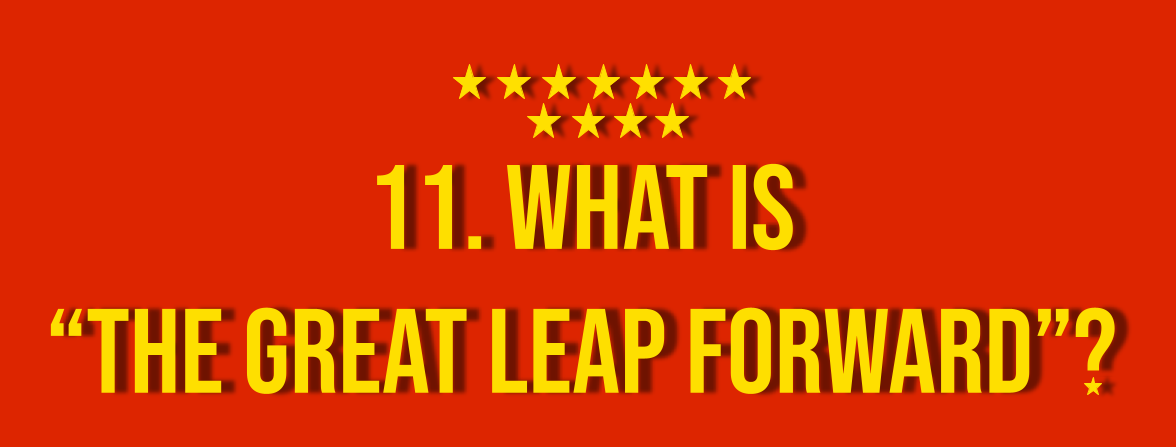11. What is "The Great Leap Forward"?
The Great Leap Forward, a socio-economic campaign initiated by the Chinese Communist Party (CCP) from 1958 to 1962, represented an ambitious attempt to rapidly transform China's economy and society. This comprehensive essay aims to provide an insightful overview of the Great Leap Forward, its historical context, policy objectives, implementation strategies, and the profound socio-economic repercussions that ensued, shaping China's trajectory during this tumultuous period.
Historical Context and Policy Objectives
The Great Leap Forward was launched in the aftermath of the First Five-Year Plan, with the aim of accelerating China's industrialization and modernization while concurrently fostering a transition to a socialist society. The policy objectives encompassed ambitious targets for agricultural and industrial production, advocating for the collective mobilization of rural communities and the implementation of communes as a means of achieving rapid economic growth and social transformation. This sweeping campaign was envisioned as a means of catapulting China into a position of global prominence and establishing the foundation for a socialist utopia.
Implementation Strategies and Communalization of Agriculture
The Great Leap Forward's implementation strategies were characterized by the communalization of agriculture, emphasizing collective farming and the consolidation of agricultural resources into large-scale communes. This reorganization of the agrarian sector was intended to bolster agricultural productivity, increase grain output, and support the rapid industrialization drive. The government's emphasis on backyard steel furnaces, known as the backyard furnaces movement, aimed at promoting small-scale steel production at the local level to meet the ambitious targets set for industrial growth.
Socio-Economic Repercussions and Humanitarian Crisis
The Great Leap Forward's policies, however, had disastrous consequences, leading to widespread famine, economic turmoil, and socio-political upheaval. The ambitious production targets, coupled with the disruption of traditional farming practices and the mismanagement of agricultural resources, resulted in a significant decline in agricultural output and widespread food shortages. The catastrophic human cost of the Great Leap Forward, characterized by the deaths of millions of people due to famine and malnutrition, underscored the profound humanitarian crisis that ensued as a direct consequence of the policy's implementation.
Legacy and Contemporary Assessment
The legacy of the Great Leap Forward remains a contentious and deeply divisive chapter in modern Chinese history. While proponents laud the campaign's emphasis on grassroots mobilization and its role in laying the groundwork for China's subsequent economic reforms, critics condemn the policy's catastrophic mismanagement, the human toll of the famine, and the lasting trauma inflicted on Chinese society. The Great Leap Forward serves as a poignant reminder of the perils of rapid and unregulated socio-economic transformations and the imperative of instituting balanced, sustainable, and people-centric policies to foster inclusive and equitable development.
Final Thoughts
The Great Leap Forward represents a watershed moment in modern Chinese history, characterized by its ambitious socio-economic objectives, the communalization of agriculture, and the catastrophic consequences that ensued. The enduring legacy of the Great Leap Forward serves as a cautionary tale, highlighting the perils of hasty policy implementations, the importance of sustainable economic development, and the imperative of prioritizing human welfare in the pursuit of societal transformation. Understanding the multifaceted dimensions of the Great Leap Forward is essential for comprehending its profound impact on China's socio-economic landscape and its enduring legacy in shaping the course of the nation's contemporary development trajectory.



